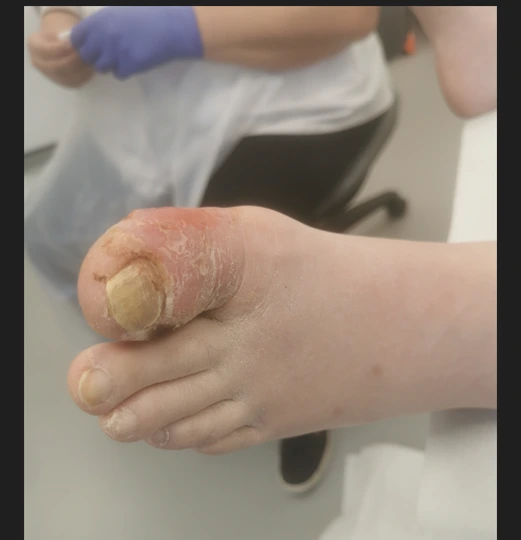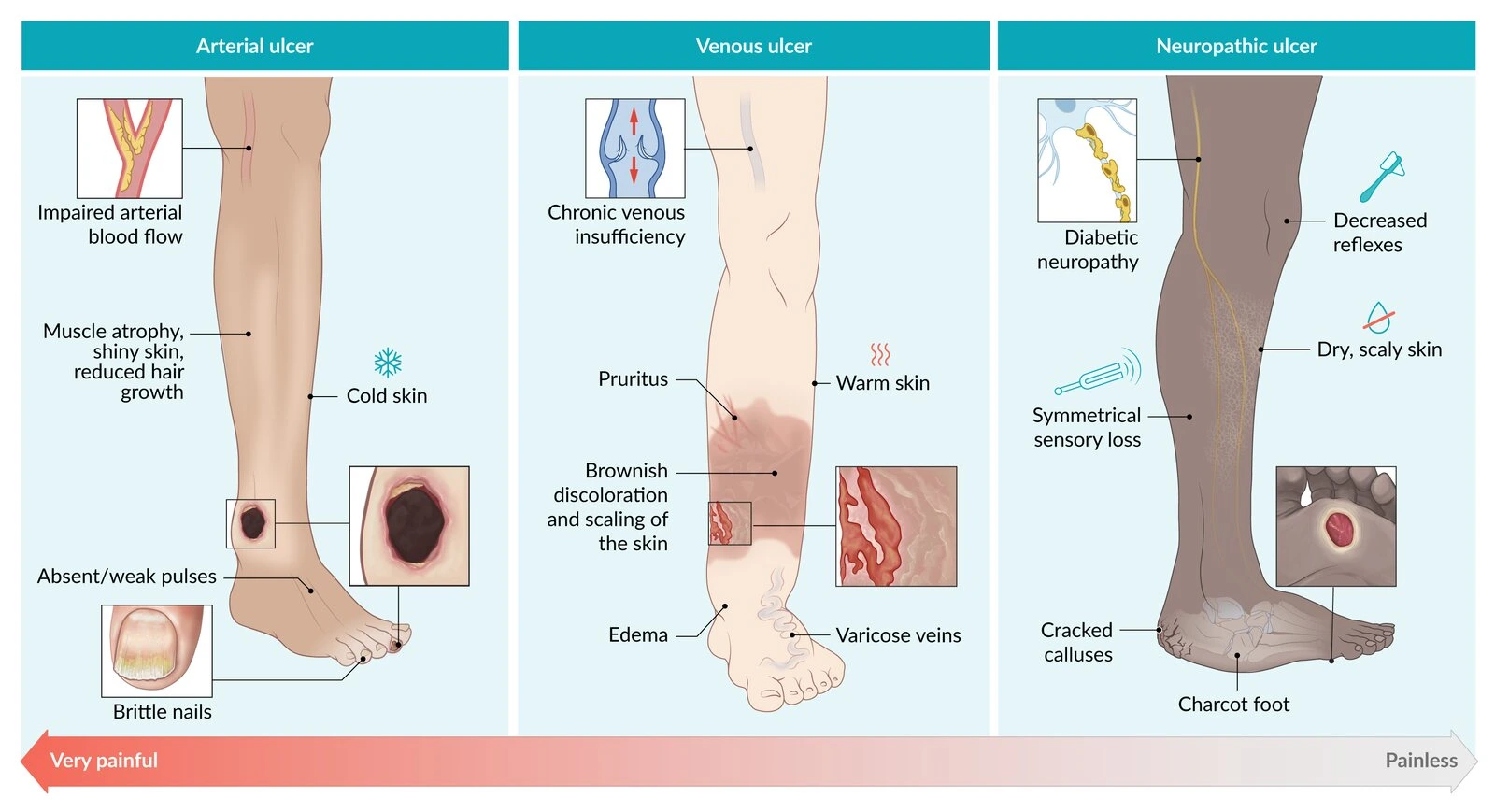+44 75754 30035 help@rapidassignmenthelp.co.uk
offer
🎁Special Offer 🎁 Discounts - Up to 55% OFF!
🎁Special Offer 🎁 Discounts - Up to 55% OFF!
Enhance your grades with our premium-quality Assignment Help UK, carefully tailored to suit your learning objectives.
The medical condition of diabetes can be referred to as a prolonged metabolic disorder that assists in numerous complications in the human body. From all of the complications, diabetic neuropathy is predominant. The condition of neuropathy can be categorized as the impairments of the nervous system that are frequent consequences of the continued and poorly managed condition of diabetes. The elevated level of sugar in the human body’s blood can affect the motor and sensory nerves which are the parts of the peripheral nerves. Diabetic neuropathy can be demonstrated as numbness, prickling, and extreme pain. These conditions can adversely affect the patient's life. Here these complications lead to the risk of foot ulcers of the patient whose medical history and diagnosis will be presented through this study (Casadei et al. 2021). This condition can lead to infections in the foot with simultaneous vascular problems. This study will present the regular assessment of the disease and the controlling of neuropathy with the help of proper medication.
The essential information regarding the patient details and the system of management to assess the medication of the patient are outlined in this tabular form to enlighten the crucial facts of the patient.
| Patient details | The gender is not specified of the patient but the age of the patient mentioned in the case study as of 55. The occupation of the patient shifted to the officer of the prison from the engineering manager. The patient has been diagnosed with diabetes for 15 years (Kaur et al. 2022). Patient has consumption of alcohol but has not intake for the last few weeks. My dietary habits are not proper and I was diagnosed with a foot ulcer around three years ago. For this reason, the patient wore the orthotic shoe after taking the suggestion of the podiatrist (Naranjo et al. 2020). The assessment related to vascular has discovered the calcified arteries including the condition of thrombosis. |
| History | On October 1, 2023, the patient looked for crisis care with a left first plantar interphalangeal joint (IPJ) ulcer and disease, at last determined to have assumed osteomyelitis (OM) owing to strain and raised blood sugars (Sempere-Bigorra et al. 2021). Hospitalization from October 1 to October 13 was monitored, including intravenous (IV) anti-infection treatment with Tazocin, Teicoplanin, and oral Ciprofloxacin. The culture of Blood distinguished Streptococcus gordonii and Morganella (ESBL) (Sloan et al. 2021). All through the emergency clinic stay, glycated haemoglobin (HbA1c) levels changed somewhere in the range of 73.00 and 108.00 mmol/mol. |
| Aetiology of the condition | The patient’s ulcer on the left 1st plantar IPJ has been suspected due to the pressure and possibly the situation getting worse for not treating diabetes effectively which delays the time of the healing (Sharma et al. 2020). This causes elevated risk factors with the condition of thrombosis. This condition requires the treatment of warfarin. |
| Pathology of the disease and the progression | Given the primary exhibitions of infection and cellulitis, the interfphalangeal joint (IPJ) wound of the left first leg raised a clinical suspicion of osteomyelitis and the ulcer was described by redness and soft, necrotic tissue including clinical suggestions of infection (Hopek and Siniak, 2020). Subsequently, there were ongoing issues with the suspicious left wound, including erythema and oedema, which directed to discussion regarding the chance of resection the intensity of the case required that healthcare professionals a number including dieticians, podiatrists, and infectious disease consultants be involved (Armstrong et al. 2023). Alkaline phosphatase (ALP) levels increased with increasing renal function. This complex clinical picture highlights the importance of careful patient management and a combined approach to managing the developing complications of the patient’s condition. |
| Medical management | After hospitalization, patients used a comprehensive treatment program, including both oral ciprofloxacin and intravenous antibiotics such as teicoplanin and terazosin Improved diabetes medication (Lantus). Throughout the hospital, Dapagliflozin was discontinued, and insulin therapy was initiated for glycemic control. The use of orthotics began during the initial sessions to provide optimal foot support (Rastogi et al. 2023). Cardiograms were accomplished to measure blood flow to the leg, which incorporated both arteries. Conferences were conducted with dietitians, infectious disease specialists, and cardiologists at hospitals as part of the combined care package. Given the severity of the disease, resection options began to be discussed, patient and pros and cons were measured and careful attempts were made to manage this complex issue, as they later turned to medication damage the intravenous infection at home by using Ertapenem and Teicoplanin. |
| Risk evaluation | The patient has a high risk most likely due to poorly controlled diabetes, as determined by fluctuating glycated hemoglobin, or HbA1c Early diagnosis of deep venous event disorder can lead to other vascular problems also called DVT, requiring treatment with warfarin, has occurred (Akkus and Sert, 2022). Poor blood flow to the leg, indicated by damaged and blocked arteries, further increases the risk, particularly when combined with the probability of osteoporosis elevated markers of kidney function cause difficulties significantly and can impact the overall health of the system (Tavakoli, 2022). The importance of the problem is evident by the discussion about the potential risks of dissection, the optimal volume to be resected, and the possible outcomes that are still ongoing. Obstacles associated with blood sugar levels observing as elevated glucose levels and insufficient nutrition in the food all can add to the increased risk of complications |
Table 1: Assessment of the patient’s condition
The patient example displays a complex interaction of variables affecting many body systems, commonly due to poorly controlled diabetes Chronic diabetes has triggered severe weakening of the nervous system, as calcified arteries, an unfavorable, which has lessened blood flow to the legs show indicates adverse effects, it Indicates involvement of soft tissues and bones.

Figure 1: Diabetic foot ulcer
The foot ulcer caused by diabetes of patient is illustrated in the picture in which it depicts that the wound of the feet and initiated the problem in the leg of the patient. Level of the glucose in patient’s body does not help to heal of the wound (Aleidan et al. 2020). So this needs the proper dressing to cover the wound for not affected by any germs. Previous involvements with myocardial infarction (MI), low ejection fraction, and deep venous thrombosis (DVT) highlight the circulatory system, thus demanding warfarin medications are used Uncontrolled diabetes reflects systemic issues by increasing the possibility of developing new coronary artery disease (Tesfaye et al. 2023).

Figure 2: The symptoms of a Foot ulcer
Kidney function is also affected; Stage 3 chronic renal disease (CKD) and elevated markers of renal function are observed in this history. The patient’s complex medical history, containing peripheral artery disease, makes foot issues difficult to treat. In addition, the transition of the patient from technical administrator to prison superintendent has implications for the musculoskeletal system because continued standing and sitting can raise the risk of foot ulcers related to pressure severe impact as it has on musculoskeletal function and structure is reflected in the suggestion to consider amputation of the lower leg. The disease is primarily caused by endocrine system variations in HbA1c levels peaking at 108.00 mmol/mol (Jalilian et al. 2020). Repeated infections and the need for prolonged development of antibiotics are always signs of a compromised immune system. Lifestyle decisions, such as previous alcohol consumption and dieting, worsen the immune system of the patient.
| L | R | |
| Ant ankle | 31.7 | 28.5 |
| Midfoot D | 31.5 | 28.6 |
| Midfoot P | 30.6 | 28.4 |
| 1st Apex | 31.4 | 24.2 |
| 2nd apex | 28.6 | 26.5 |
| 5th met | 30.7 | 27.2 |
Table 2: The dimension of the ulcers in both legs
The various dimension of the foot ulcer in both leg of the patient are illustrated here to summarize it. The formation of wound in the ankle of left and right leg has demonstrated as 31.7 and 28.5 respectively. Wounds of the midfoot with the apex are also demonstrated here in the tabular form.
In this patient illustration it has been shown that poorly controlled diabetes severely affects the foot, causing difficulties and requiring compensatory approaches. The main side effect is foot ulcer formation, i.e. the left first interphalangeal joint (IPJ) ulcer wound and so on interventions have been not. Effective techniques such as wearing shoes and appropriate footwear with minimal impact on the affected area are part of the suggested treatment (Schofield et al. 2021). The patient is instructed to elevate the leg, reduce activity so, and the patient does not rest and doing different activity can be delayed to recover the wound. Removal of the dressing the patient is vital to promote healing. Surgery is being investigated to treat severe osteoarthritis of the tibia of the left big toe, which may require amputation. Intravenous antibiotics are used to treat the infection as a compensatory measure to control the course of the infection. Generally, the goal of changing dressings with various antibiotics is to promote wound healing and prevent future complications. Management of the patient's diabetes includes insulin dose adjustment, dapagliflozin discontinuation, and regular blood sugar monitoring (Tesfaye et al. 2023). These steps aim to address dysregulated glycemic management, with the importance of raising blood glucose levels to promote appropriate healing and reduce the chance of further complications. Furthermore, lifestyle factors such as alcohol interruption and nutritional modification were thought to offset the overall effects on the lower limb of the body of the patient. Several specialist physicians involved, including dietitians, foot specialists, and diseases in addition to infectious disease specialists, emphasize a collective method to treat the complex features of lower body organ issues.
This patient appears to have an advanced diabetic foot ulcer and may have osteomyelitis below. The considerable slough, probing to the bone, and lack of improvement despite IV antibiotics and unloading all support the diagnosis. A diabetic foot infection that spreads contiguously frequently leads to osteomyelitis (Tavakoli, 2022). Diabetes-related immunosuppression and microvascular disorders make people more vulnerable. This patient may have a wound caused by the diabetes on the foot, which is not healing properly. This condition is known as a complicated diabetic osteomyelitis foot ulcer (Akkus and Sert, 2022). Upon inspecting the quantity of dead tissue, probe the incision to determine whether it contacts the bone, and monitor the patient's reaction to IV antibiotics and offloading to identify this disease.
Offloading is the process of using customized shoes or casts to relieve pressure on the wound. An infection of the bone called osteomyelitis frequently develops when a diabetic foot ulcer gets deeper. Diabetes impairs blood vessels and the immune system, which facilitates the occurrence and persistence of infections.
Get assistance from our PROFESSIONAL ASSIGNMENT WRITERS to receive 100% assured AI-free and high-quality documents on time, ensuring an A+ grade in all subjects.
With our nursing assignment help, you can focus on mastering your clinical skills while we handle your complex theoretical assignments with ease.
The early stages of care were suitably directed on pressure unloading, microbiological analysis, antibiotic treatment, and wound debridement to control infections. Yet, considering the patient's comorbidities, more drastic choices like surgical debridement or even amputation may be necessary given the substantial bone involvement that is now evident and the lack of progress. In order to remove contaminated tissue, stop recurrence, and maintain maximum function, below-knee surgery would probably be preferred to trans-metatarsal surgery. Preventing systemic spread and limb damage is more important, even though it is upsetting for the patient.
To promote healing, it is also necessary to treat underlying risk factors such as peripheral vascular disease and glycemic management. Although podiatry plays a prominent role in evaluation, diagnosis, surgery planning, and care coordination, multidisciplinary contributions are essential for this complicated case (Tavakoli, 2022). To facilitate patient comprehension and collaborative decision-making during this difficult presentation, it is imperative to communicate the reasoning behind any operations in detail.
Analyzing data from several sources is necessary to evaluate this complicated diabetic foot ulcer and choose the best course of treatment. When planning treatment, a thorough assessment of the patient yields subjective information that is carefully considered, listened to, and treated with compassion. But it's also necessary to incorporate objective outside sources. Examining current peer-reviewed research on diabetic limb salvage, followed by an analysis of study results, design, and constraints to develop recommendations that are supported by data (Rastogi et al. 2023). In contrast to conventional treatment alone, a randomized trial conducted in 2022 shown that supplementary HBOT enhances wound healing and lowers severe amputations. HBOT is not indicated by the patient's renal impairment, though. Applying clinical judgment to understand the relationship between individual characteristics and population-level evidence.
The picture of the feet of the patient is demonstrated to understand the terrible of the wound caused by diabetes. It can affect the blood circulation of the leg of the patient with the impairment of the nerves. The blood circulation in the feet delay the healing of the wounds (Elafros et al. 2022). Along with this the damaged nerve affects the sensation in the feet and it reduces the ability of sensation of leg. So proper intervention with the dressing are required to heal the wound effectively. The treatment strategy is guided by published recommendations from the International Working Group on the Diabetic Foot and Infectious Diseases Society of America. These guidelines include expert-endorsed, verified techniques for infection identification and antibiotic regimens. Staying informed about new research that may impact diabetic limb care alternatives can be achieved by regularly scanning journals and conducting database searches. This year, the researcher attended podiatry conferences where it is learned about innovative debridement technology and thought-provoking early trial outcomes (Rastogi et al. 2023). It is important to evaluate claims of product or treatment superiority seriously, though. Upon combining data from these many evidence streams and applying clinical reasoning techniques to arrive at informed decisions. The patient's circumstances, desired course of therapy, and the best available data are all taken into account during the multidimensional analysis process.
Conclusion
The assessment of complications of diabetes which lead to foot ulcers are illustrated in this study to emphasize it. The patient history helps to evaluate the proper method with the evaluation method to get recovery of the disease are also portrayed in this with proper investigation. The investigation about the proper medication and the therapies are suggested for the patient by taking various appointments from the experts. This study has enlightened the proper remedies for the issues which have been experienced by the patient.
Reference list
Journals
Background Get top-quality assistance from our Assignment Help Online for your healthcare evaluation proposal and academic...View and Download
Introduction - Enhancing Museum Marketing Strategies Consulting in practice refers to the process of recommending expert...View and Download
Introduction to Leadership in Organizations Summative Case Study 1.1. Leader’s background information Sheryl...View and Download
Employee Motivation and Performance at TESCO: A Retail Case Study The motivation of employees plays a bigger role in...View and Download
Chapter 1: Introduction 1.1 Introduction Struggling with assignments on mental health and therapy? Online Assignment Help...View and Download
Introduction: Digital Business In modern environment, the use of digital technologies become popular within the companies...View and Download
